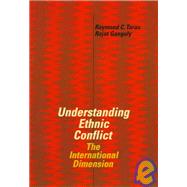| Preface: Nationalism at the Turn of the New Millennium | xi | (4) | |||
| Acknowledgments | xv | ||||
| PART I ETHNIC CONFLICT AND INTERNATIONAL POLITICS: A CONCEPTUAL FRAMEWORK | 1 | (126) | |||
|
3 | (38) | |||
|
3 | (3) | |||
|
6 | (3) | |||
|
9 | (3) | |||
|
12 | (2) | |||
|
14 | (5) | |||
|
14 | (1) | |||
|
15 | (3) | |||
|
18 | (1) | |||
|
19 | (4) | |||
|
19 | (2) | |||
|
21 | (1) | |||
|
22 | (1) | |||
|
23 | (8) | |||
|
31 | (10) | |||
|
41 | (27) | |||
|
41 | (1) | |||
|
42 | (11) | |||
|
42 | (6) | |||
|
48 | (5) | |||
|
53 | (4) | |||
|
57 | (7) | |||
|
64 | (4) | |||
|
68 | (28) | |||
|
68 | (1) | |||
|
68 | (15) | |||
|
69 | (5) | |||
|
74 | (7) | |||
|
81 | (1) | |||
|
82 | (1) | |||
|
83 | (8) | |||
|
83 | (1) | |||
|
84 | (2) | |||
|
86 | (2) | |||
|
88 | (2) | |||
|
90 | (1) | |||
|
91 | (5) | |||
|
96 | (31) | |||
|
96 | (1) | |||
|
97 | (4) | |||
|
97 | (1) | |||
|
98 | (3) | |||
|
101 | (1) | |||
|
101 | (13) | |||
|
103 | (4) | |||
|
107 | (3) | |||
|
110 | (4) | |||
|
114 | (4) | |||
|
114 | (2) | |||
|
116 | (2) | |||
|
118 | (2) | |||
|
120 | (2) | |||
|
122 | (5) | |||
| PART II CASE STUDIES | 127 | (154) | |||
|
129 | (31) | |||
|
129 | (2) | |||
|
131 | (18) | |||
|
131 | (3) | |||
|
134 | (1) | |||
|
135 | (2) | |||
|
137 | (2) | |||
|
139 | (1) | |||
|
140 | (3) | |||
|
143 | (1) | |||
|
144 | (3) | |||
|
147 | (2) | |||
|
149 | (2) | |||
|
151 | (3) | |||
|
154 | (2) | |||
|
156 | (4) | |||
|
160 | (24) | |||
|
160 | (1) | |||
|
161 | (13) | |||
|
161 | (2) | |||
|
163 | (1) | |||
|
164 | (1) | |||
|
165 | (1) | |||
|
166 | (1) | |||
|
167 | (2) | |||
|
169 | (1) | |||
|
170 | (1) | |||
|
171 | (3) | |||
|
174 | (2) | |||
|
176 | (2) | |||
|
178 | (2) | |||
|
180 | (4) | |||
|
184 | (41) | |||
|
184 | (1) | |||
|
185 | (3) | |||
|
185 | (1) | |||
|
186 | (1) | |||
|
187 | (1) | |||
|
188 | (11) | |||
|
189 | (2) | |||
|
191 | (2) | |||
|
193 | (2) | |||
|
195 | (1) | |||
|
195 | (2) | |||
|
197 | (2) | |||
|
199 | (1) | |||
|
199 | (1) | |||
|
200 | (1) | |||
|
201 | (1) | |||
|
202 | (11) | |||
|
203 | (1) | |||
|
204 | (1) | |||
|
205 | (1) | |||
|
205 | (2) | |||
|
207 | (1) | |||
|
208 | (3) | |||
|
211 | (2) | |||
|
213 | (2) | |||
|
215 | (10) | |||
|
225 | (22) | |||
|
225 | (1) | |||
|
226 | (1) | |||
|
227 | (1) | |||
|
228 | (3) | |||
|
231 | (10) | |||
|
231 | (2) | |||
|
233 | (1) | |||
|
234 | (1) | |||
|
235 | (2) | |||
|
237 | (1) | |||
|
237 | (3) | |||
|
240 | (1) | |||
|
241 | (6) | |||
|
247 | (34) | |||
|
247 | (1) | |||
|
248 | (5) | |||
|
248 | (3) | |||
|
251 | (2) | |||
|
253 | (5) | |||
|
254 | (2) | |||
|
256 | (2) | |||
|
258 | (3) | |||
|
261 | (4) | |||
|
261 | (1) | |||
|
262 | (3) | |||
|
265 | (3) | |||
|
268 | (7) | |||
|
275 | (6) | |||
| Selected Bibliography | 281 | (8) | |||
| Index | 289 |








